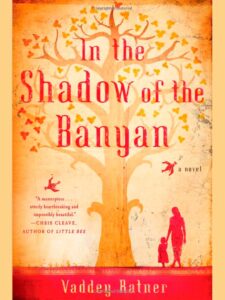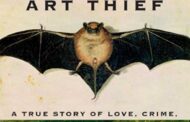Book Short
In the Shadow of the Banyan
Review by Stephanie Miller

A child’s world is shattered by civil war in Cambodia. One by one the people she loves are blown up, gone missing, stolen away in chains, tortured, starved, killed. Or, perhaps even worse, must continue to suffer as slaves alongside her.
“In the Shadow of the Banyan” by Vaddey Ratner is a shocking, semi-autobiographical tale of survival during massive political upheaval. In April of 1975, the civil war between the US-backed government and the Khmer Rouge insurgency reached a climax. Five-year-old polio survivor Raami wears a leg brace and worries she will never be beautiful and graceful like her mother. She is captivated by the magical world of the ancient stories she was told on her sickbed, and her daydreams are buoyed by the breathtaking beauty of her parents’ privileged lives as minor royals in Phnom Penh.
An astute, sensitive child, she senses the adults are worried about something she can’t understand. Suddenly, everyone must join a mass, forced evacuation from the cities. The Khmer Rouge has decided to “equalize” all citizens by moving them into rural, communal farms.
The child’s experiences are horrible.
Basing the book on her own life during the insurrection, Ratner spares us nothing. Despite this unflinching narrative, the book is essentially a love song to her homeland, and full of hope.
Before he is taken away, Raami’s father tells her, “I told you stories to give you wings, so that you would never be trapped by anything – your name, your title, the limits of your body, this world’s suffering.” Her heart is broken by his removal, but her spirit is sustained by the stories she has learned to interpret as his love for her.
Time and time again the Khmer Rouge force her and her dwindling family to move on. She makes a connection, and it is severed without notice. She finds a scrap of comfort and it evaporates due to the cruelty, ignorance, and ineptitude of those in charge.
Raami survives forced labor and near starvation by simply refusing to forget her former happiness. At the end, she realizes that keeping her father’s memory alive is the way he stays present in the world.
I didn’t know much about Cambodia or this time in history when I picked up my copy of “In the Shadow of the Banyan” at Sherman’s. Raami is inspiring in her ability to retain her curiosity and love of beauty, despite the unceasing hardship her life has become.
Micro-Shorts
Western Union by Zane Grey
The “books for boys” of the 1930s and 1940s are wonderful for their sense of adventure, (somewhat archaic) sense of what it takes to be a man, and the visionary perspective of the American West. I loved this one, since it follows fictional participant Cameron Wayne (a “tenderfoot” Yankee!) in the real story of engineer Edward Creighton who stretched a tiny iron wire more than 3,000 miles across the country to connect the East and West via telegraph. It’s got honorable and courageous cowboys and pretty, sensible women (how did they stay gentle in all that dust and sun and hardship?!) and a wonderful friendship between Wayne and his work partners.
Crying in H Mart, a memoir by Michelle Zauner
Half Korean and desperate to please her exacting but loving mother, Zauner tells us the tale of growing up of mixed Asian race and her survival of her mother’s overbearing love and horrible death by cancer. Through her grief, she finds her own self. A persistent theme is food – how her mother shows love, and what they bond over. Also, how Korean culture has a special food for every life event and custom. I liked the food parts better than the memoir parts. It’s a good view of the dynamics of a mother-daughter relationship in Korean-American culture.





